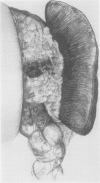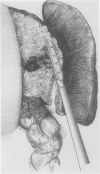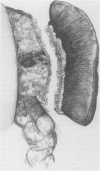Abstract
OBJECTIVE. The authors review their initial experience with laparoscopic splenectomy in patients with hematologic diseases. Efficacy, morbidity, and mortality of the technique are presented, and other patient recovery parameters are discussed. SUMMARY BACKGROUND DATA. Laparoscopic splenectomy is performed infrequently and data regarding its safety and efficacy are scarce. Factors such as a high level of technical difficulty, the potential for sudden, severe hemorrhage, and slow accrual of operative experience due to a relatively limited number of procedures are responsible. The potential patient benefits from the development of a minimally invasive form of splenectomy are significant. METHODS. Clinical follow-up, a prospective longitudinal database, and review of medical records were analyzed for all patients referred for elective splenectomy for hematologic disease from March 1992 to March 1995. RESULTS. Laparoscopic splenectomy was attempted in 43 patients and successfully completed in 35 (81%). Therapeutic platelet response to splenectomy occurred in 82% of patients with immune thrombocytopenic purpura and hematocrit level increased in 60% of patients with autoimmune hemolytic anemia undergoing successful laparoscopic splenectomy. The morbidity rate was 11.6% (5 of 43 patients), and the mortality rate was 4.7% (2 of 43 patients). Return of gastrointestinal function occurred in patients 23.1 hours after laparoscopic splenectomy and 76 hours after conversion to open splenectomy (p < 0.05). Mean length of stay was 2.7 days after laparoscopic splenectomy and 6.8 days after conversion to open splenectomy (p < 0.05). CONCLUSION. Laparoscopic splenectomy may be performed with efficacy, morbidity, and mortality rates comparable to those of open splenectomy for hematologic diseases, and it appears to retain other patient benefits of laparoscopic surgery.
Full text
PDF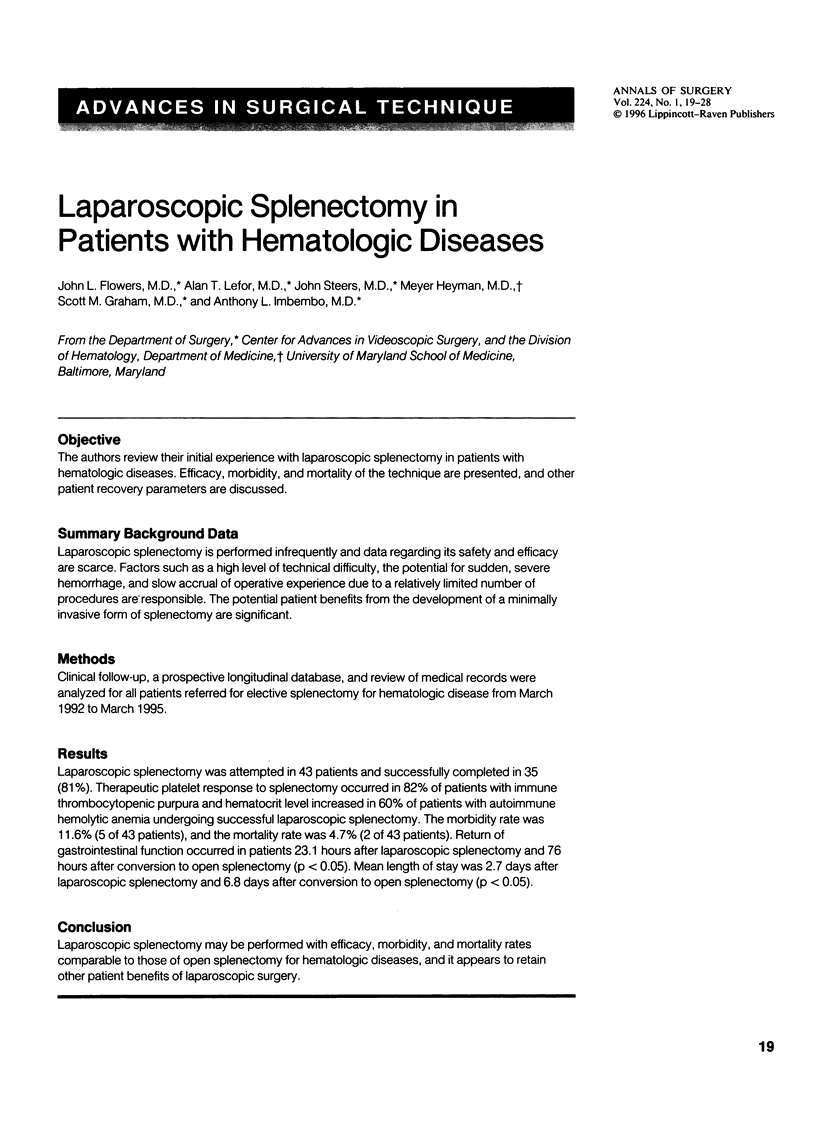
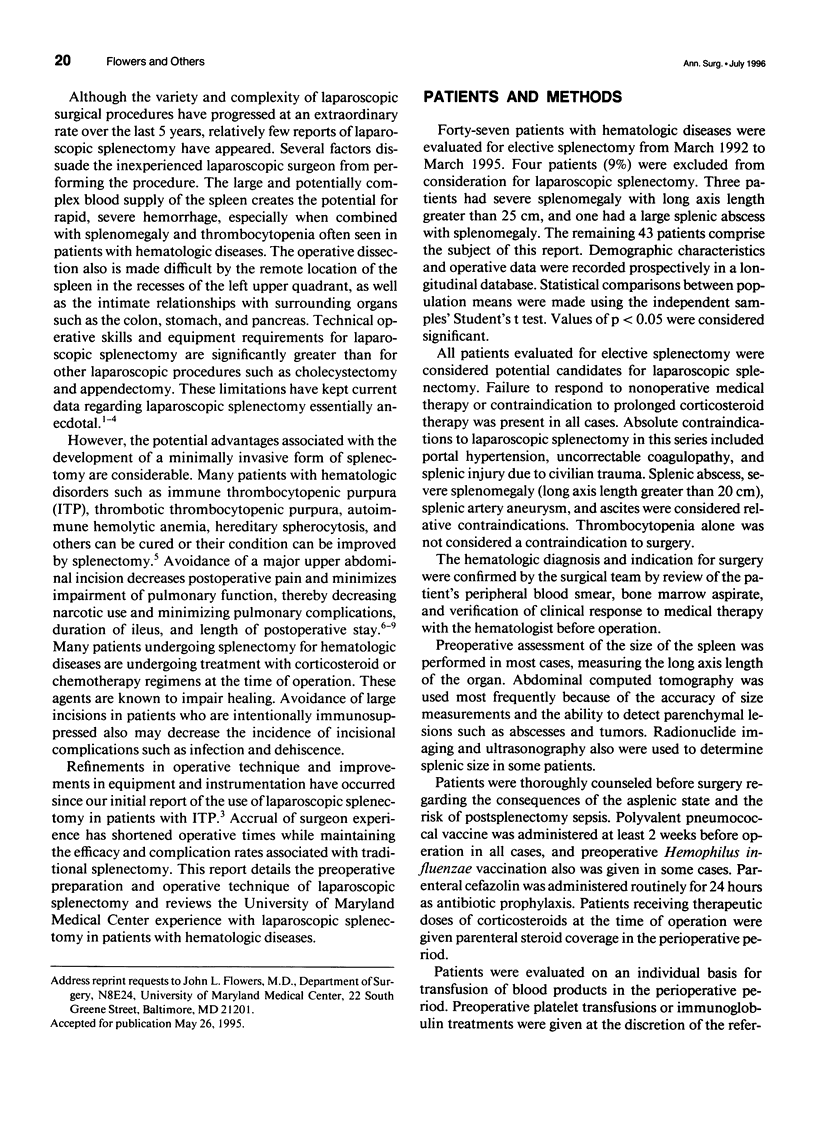
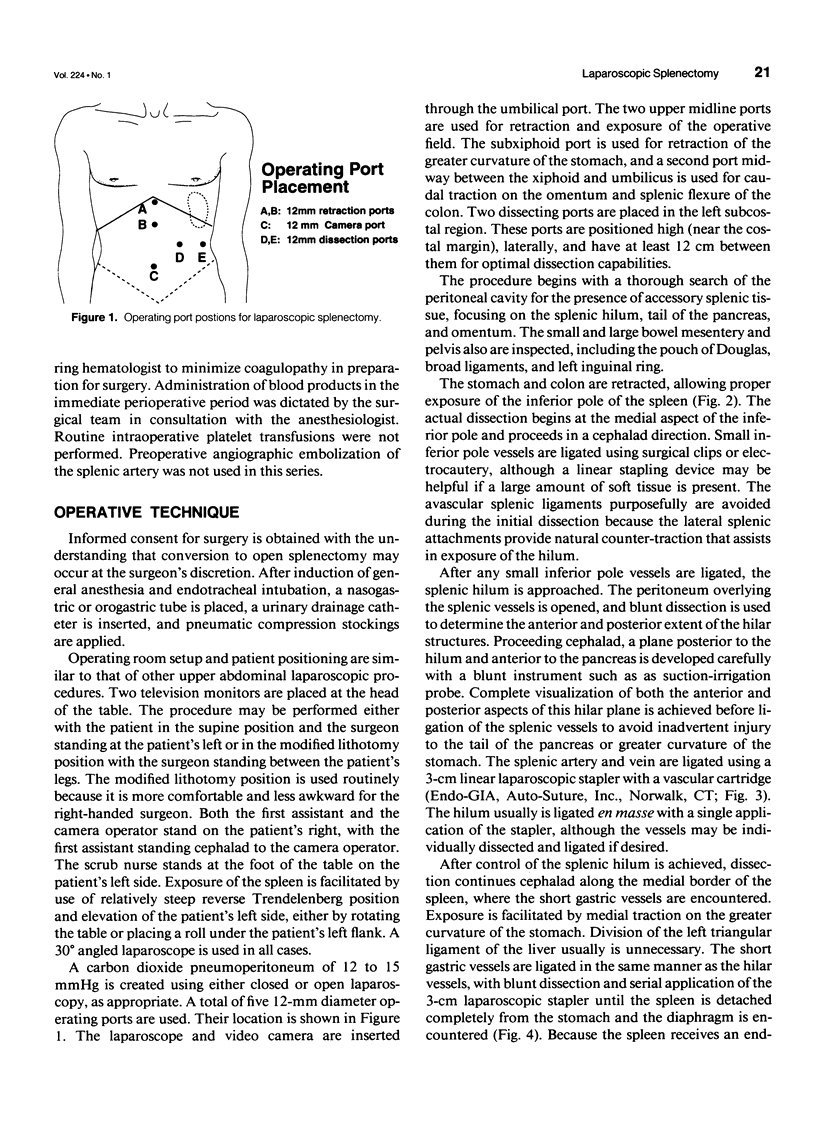
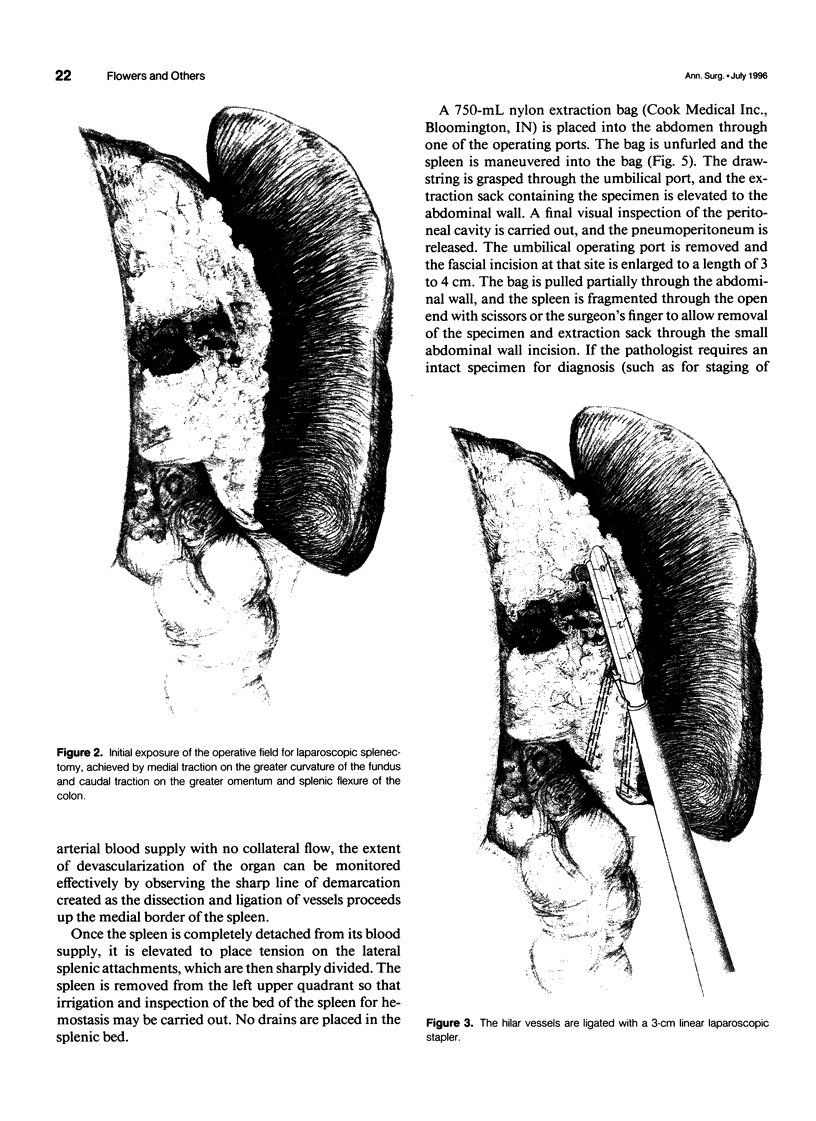
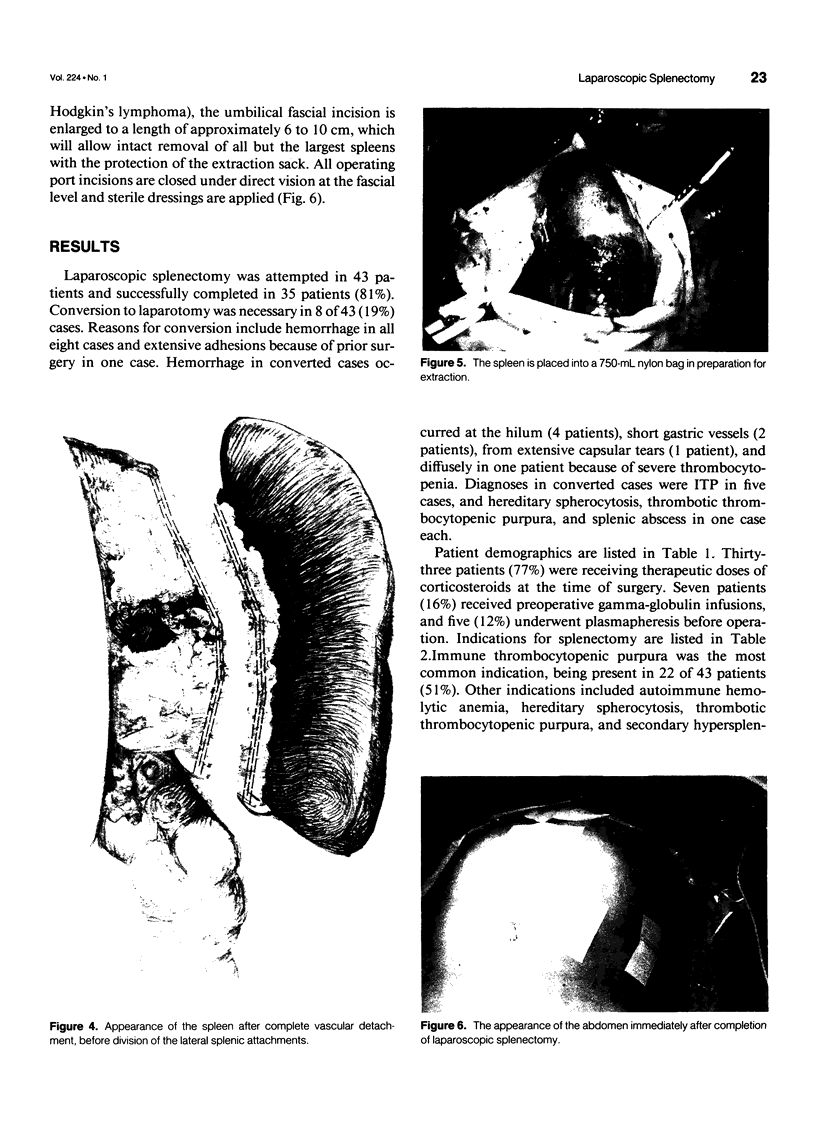
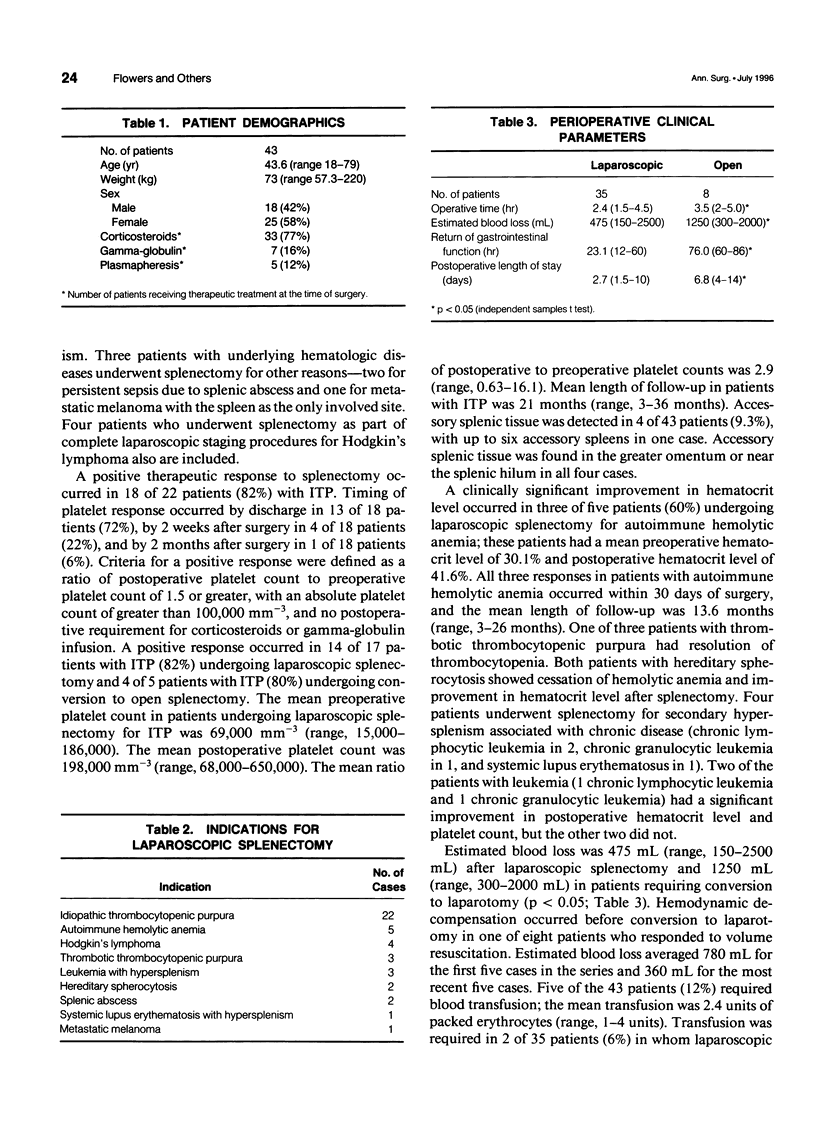
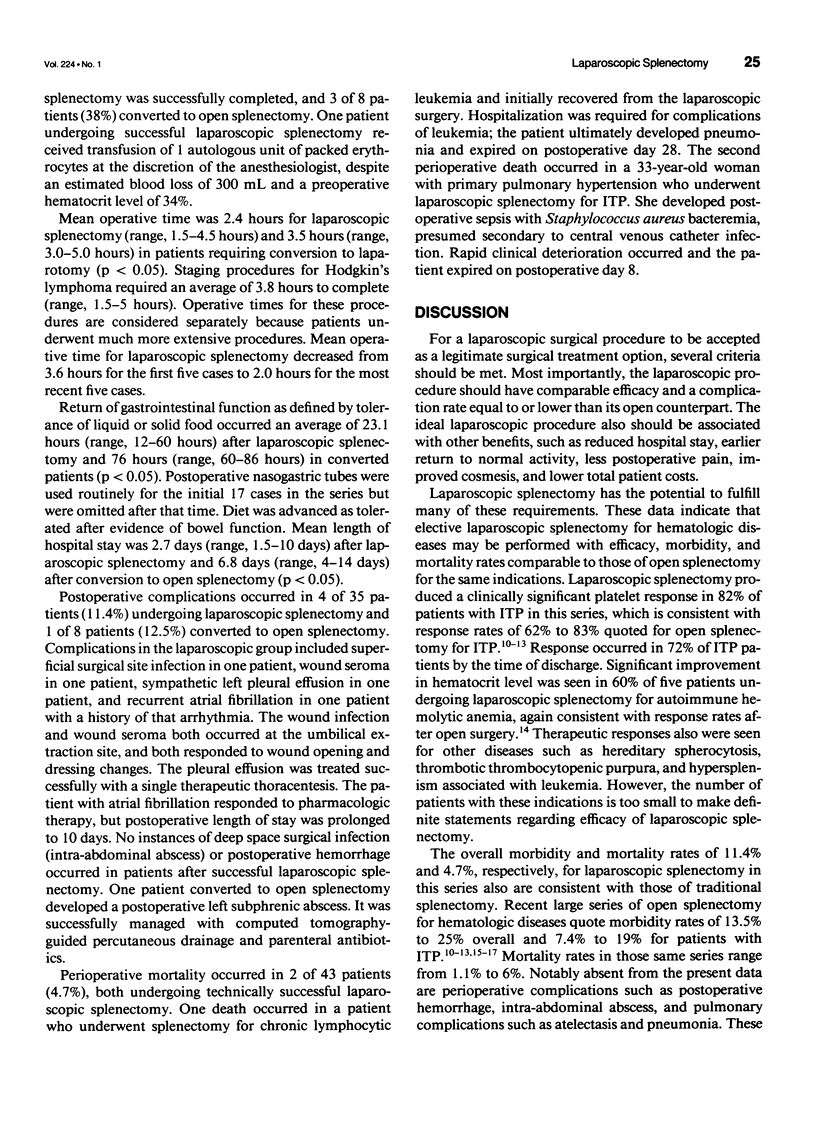
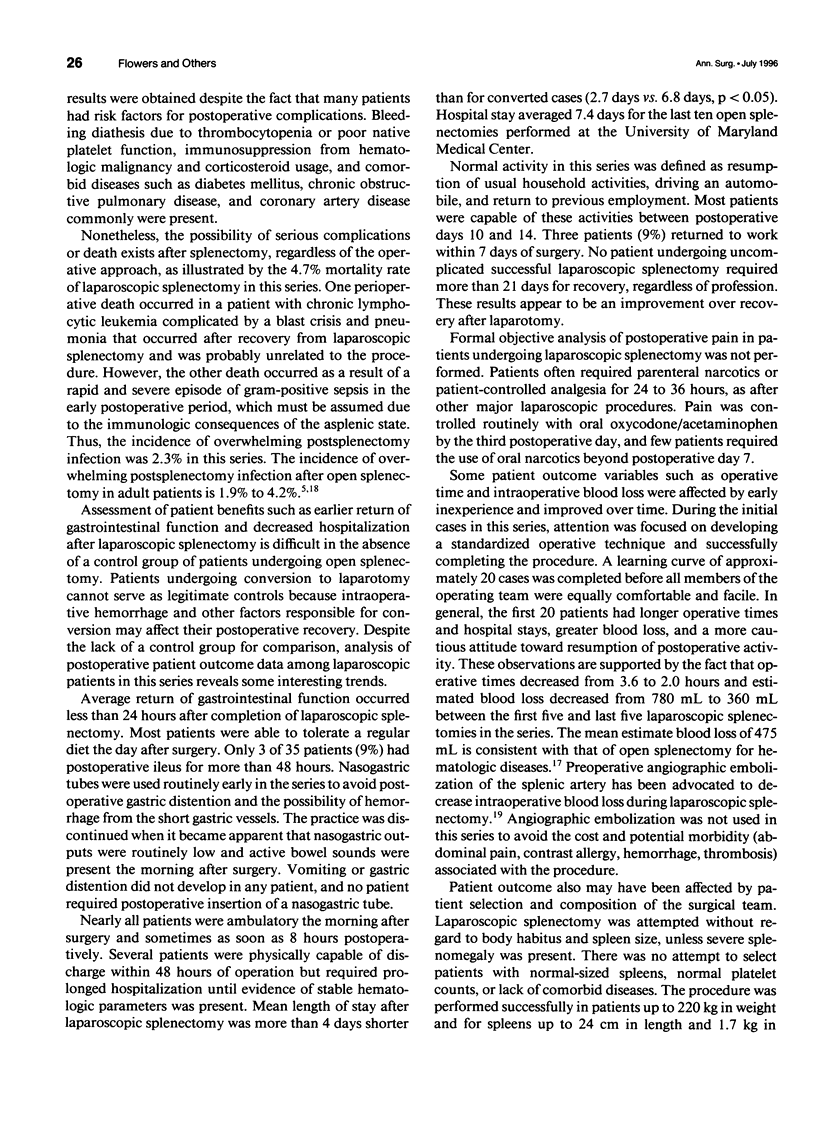
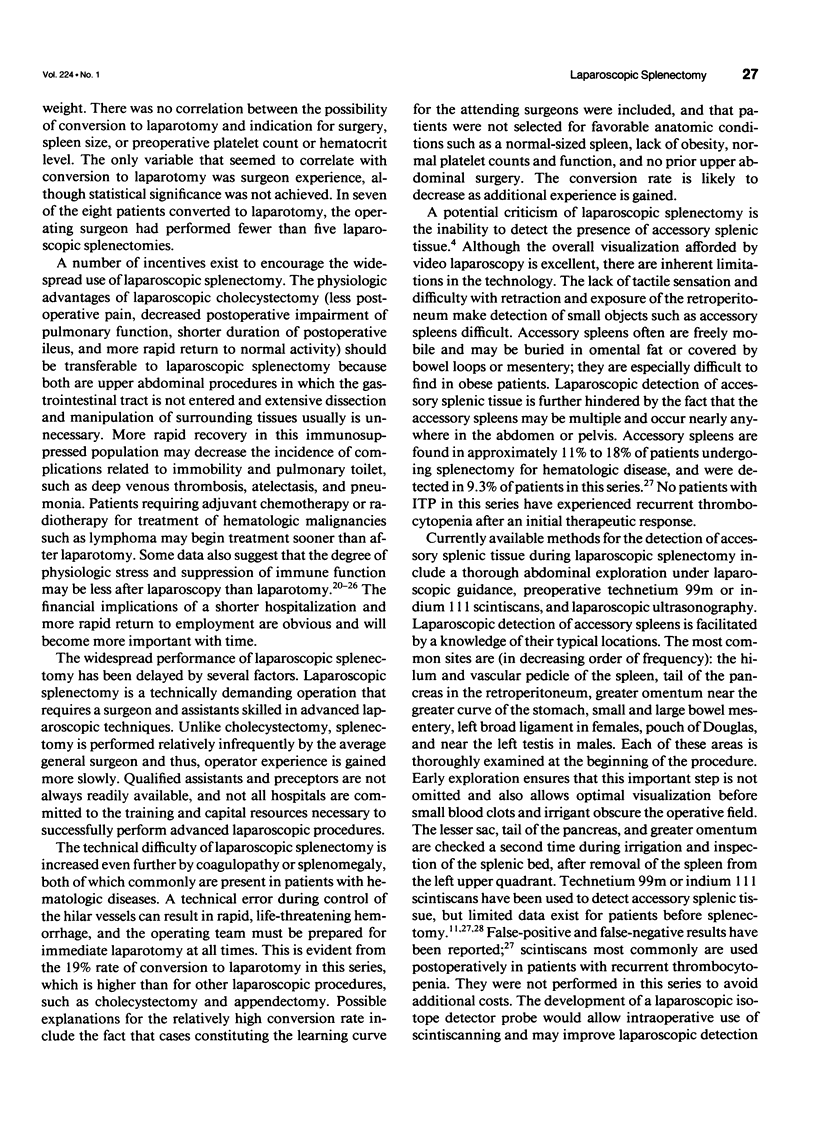
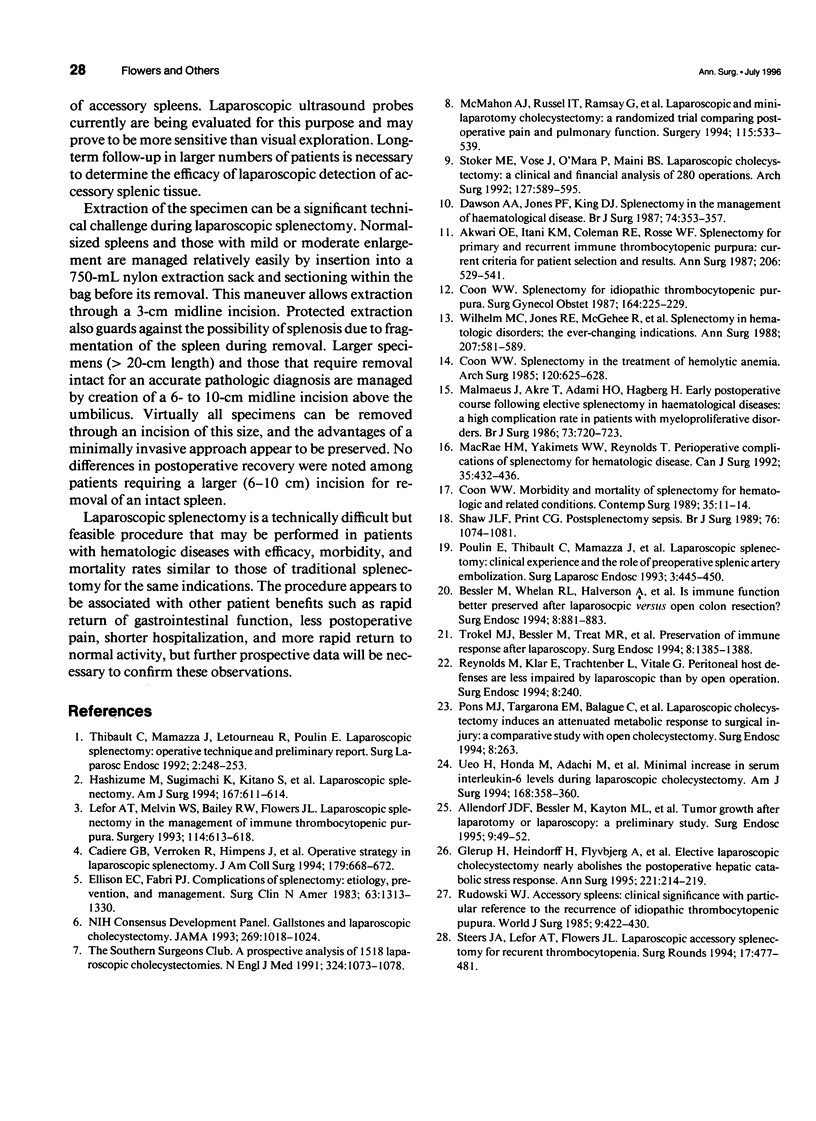
Images in this article
Selected References
These references are in PubMed. This may not be the complete list of references from this article.
- Akwari O. E., Itani K. M., Coleman R. E., Rosse W. F. Splenectomy for primary and recurrent immune thrombocytopenic purpura (ITP). Current criteria for patient selection and results. Ann Surg. 1987 Oct;206(4):529–541. doi: 10.1097/00000658-198710000-00014. [DOI] [PMC free article] [PubMed] [Google Scholar]
- Allendorf J. D., Bessler M., Kayton M. L., Whelan R. L., Treat M. R., Nowygrod R. Tumor growth after laparotomy or laparoscopy. A preliminary study. Surg Endosc. 1995 Jan;9(1):49–52. doi: 10.1007/BF00187885. [DOI] [PubMed] [Google Scholar]
- Bessler M., Whelan R. L., Halverson A., Treat M. R., Nowygrod R. Is immune function better preserved after laparoscopic versus open colon resection? Surg Endosc. 1994 Aug;8(8):881–883. doi: 10.1007/BF00843460. [DOI] [PubMed] [Google Scholar]
- Cadiere G. B., Verroken R., Himpens J., Bruyns J., Efira M., De Wit S. Operative strategy in laparoscopic splenectomy. J Am Coll Surg. 1994 Dec;179(6):668–672. [PubMed] [Google Scholar]
- Coon W. W. Splenectomy for idiopathic thrombocytopenic purpura. Surg Gynecol Obstet. 1987 Mar;164(3):225–229. [PubMed] [Google Scholar]
- Coon W. W. Splenectomy in the treatment of hemolytic anemia. Arch Surg. 1985 May;120(5):625–628. doi: 10.1001/archsurg.1985.01390290099017. [DOI] [PubMed] [Google Scholar]
- Dawson A. A., Jones P. F., King D. J. Splenectomy in the management of haematological disease. Br J Surg. 1987 May;74(5):353–357. doi: 10.1002/bjs.1800740508. [DOI] [PubMed] [Google Scholar]
- Ellison E. C., Fabri P. J. Complications of splenectomy. Etiology, prevention, and management. Surg Clin North Am. 1983 Dec;63(6):1313–1330. doi: 10.1016/s0039-6109(16)43191-9. [DOI] [PubMed] [Google Scholar]
- Glerup H., Heindorff H., Flyvbjerg A., Jensen S. L., Vilstrup H. Elective laparoscopic cholecystectomy nearly abolishes the postoperative hepatic catabolic stress response. Ann Surg. 1995 Mar;221(3):214–219. doi: 10.1097/00000658-199503000-00002. [DOI] [PMC free article] [PubMed] [Google Scholar]
- Hashizume M., Sugimachi K., Kitano S., Shimada M., Baba H., Ueno K., Ohta M., Tomikawa M. Laparoscopic splenectomy. Am J Surg. 1994 Jun;167(6):611–614. doi: 10.1016/0002-9610(94)90109-0. [DOI] [PubMed] [Google Scholar]
- Lefor A. T., Melvin W. S., Bailey R. W., Flowers J. L. Laparoscopic splenectomy in the management of immune thrombocytopenia purpura. Surgery. 1993 Sep;114(3):613–618. [PubMed] [Google Scholar]
- MacRae H. M., Yakimets W. W., Reynolds T. Perioperative complications of splenectomy for hematologic disease. Can J Surg. 1992 Aug;35(4):432–436. [PubMed] [Google Scholar]
- Malmaeus J., Akre T., Adami H. O., Hagberg H. Early postoperative course following elective splenectomy in haematological diseases: a high complication rate in patients with myeloproliferative disorders. Br J Surg. 1986 Sep;73(9):720–723. doi: 10.1002/bjs.1800730915. [DOI] [PubMed] [Google Scholar]
- McMahon A. J., Russell I. T., Ramsay G., Sunderland G., Baxter J. N., Anderson J. R., Galloway D., O'Dwyer P. J. Laparoscopic and minilaparotomy cholecystectomy: a randomized trial comparing postoperative pain and pulmonary function. Surgery. 1994 May;115(5):533–539. [PubMed] [Google Scholar]
- Poulin E., Thibault C., Mamazza J., Girotti M., Côté G., Renaud A. Laparoscopic splenectomy: clinical experience and the role of preoperative splenic artery embolization. Surg Laparosc Endosc. 1993 Dec;3(6):445–450. [PubMed] [Google Scholar]
- Rudowski W. J. Accessory spleens: clinical significance with particular reference to the recurrence of idiopathic thrombocytopenic purpura. World J Surg. 1985 Jun;9(3):422–430. doi: 10.1007/BF01655277. [DOI] [PubMed] [Google Scholar]
- Shaw J. H., Print C. G. Postsplenectomy sepsis. Br J Surg. 1989 Oct;76(10):1074–1081. doi: 10.1002/bjs.1800761029. [DOI] [PubMed] [Google Scholar]
- Stoker M. E., Vose J., O'Mara P., Maini B. S. Laparoscopic cholecystectomy. A clinical and financial analysis of 280 operations. Arch Surg. 1992 May;127(5):589–595. doi: 10.1001/archsurg.1992.01420050117015. [DOI] [PubMed] [Google Scholar]
- Thibault C., Mamazza J., Létourneau R., Poulin E. Laparoscopic splenectomy: operative technique and preliminary report. Surg Laparosc Endosc. 1992 Sep;2(3):248–253. [PubMed] [Google Scholar]
- Trokel M. J., Bessler M., Treat M. R., Whelan R. L., Nowygrod R. Preservation of immune response after laparoscopy. Surg Endosc. 1994 Dec;8(12):1385–1388. doi: 10.1007/BF00187341. [DOI] [PubMed] [Google Scholar]
- Ueo H., Honda M., Adachi M., Inoue H., Nakashima H., Arinaga S., Akiyoshi T. Minimal increase in serum interleukin-6 levels during laparoscopic cholecystectomy. Am J Surg. 1994 Oct;168(4):358–360. doi: 10.1016/s0002-9610(05)80166-7. [DOI] [PubMed] [Google Scholar]
- Wilhelm M. C., Jones R. E., McGehee R., Mitchener J. S., Sandusky W. R., Hess C. E. Splenectomy in hematologic disorders. The ever-changing indications. Ann Surg. 1988 May;207(5):581–589. doi: 10.1097/00000658-198805000-00012. [DOI] [PMC free article] [PubMed] [Google Scholar]



